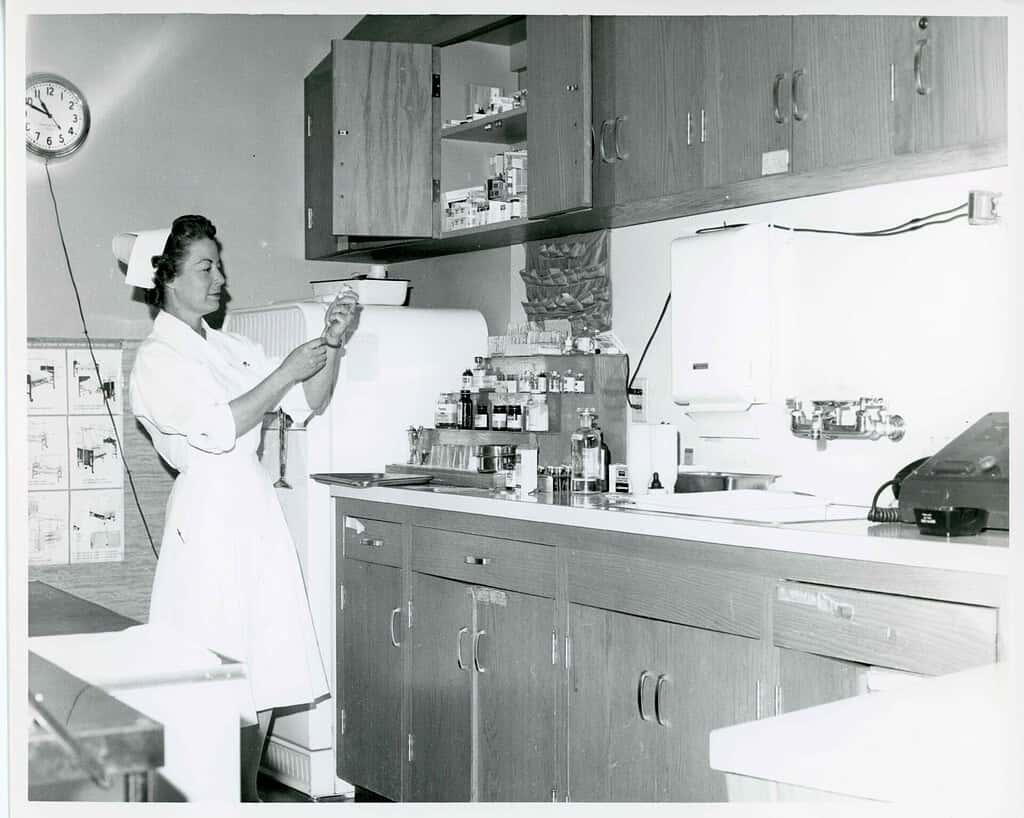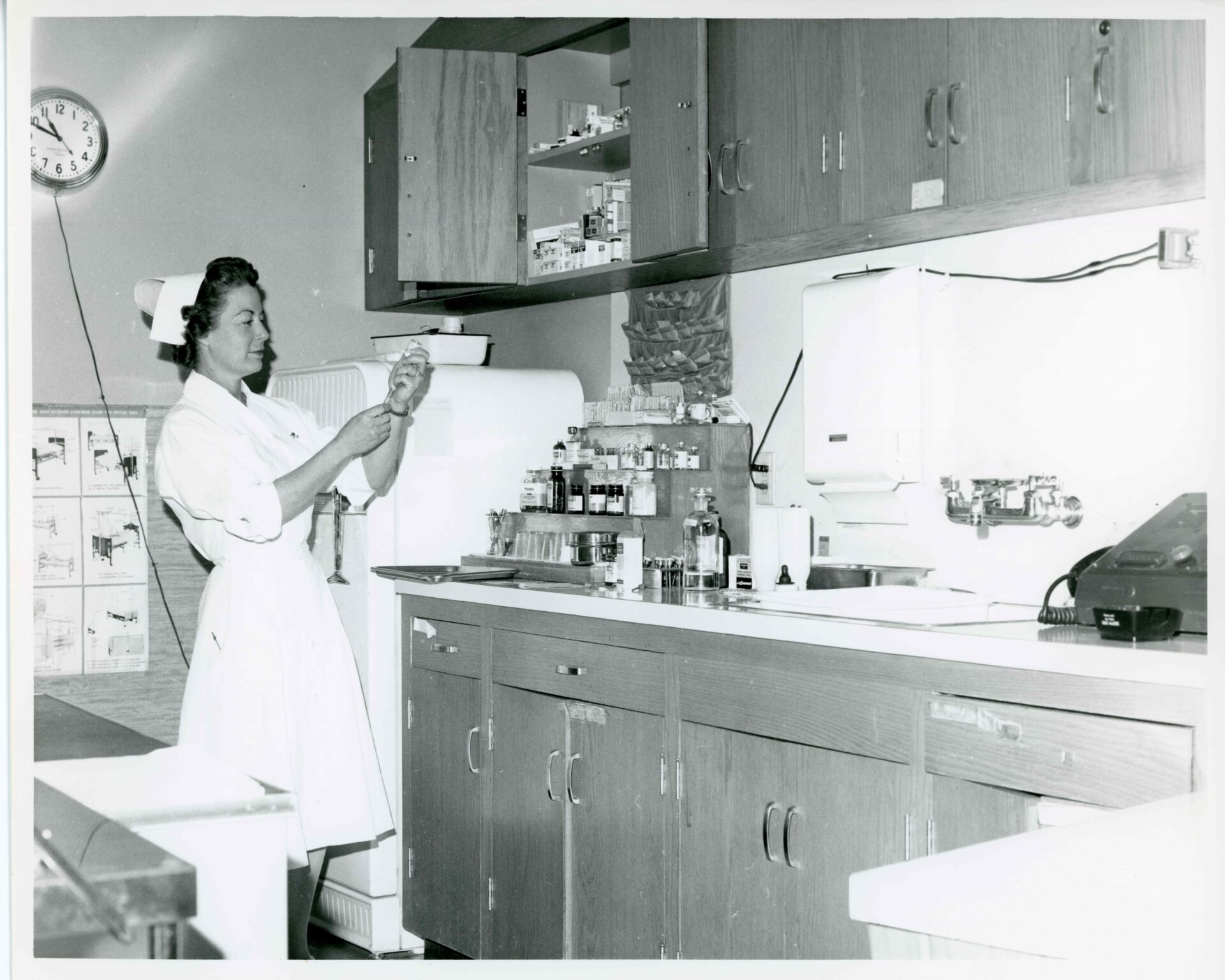Some information may be outdated.
This month, the Moab Museum is proud to announce a new exhibition beyond our walls at Moab Regional Hospital. “Legacy of Care: A Brief History of Medical Services” dives into the history of medical care and services as well as the providers themselves.
Moab’s medical history is defined by dedicated caregivers both inside and outside hospital walls. From doctors making house calls on horseback to nurses hosting supply drives during pandemics, the Moab community has been adapting to rural healthcare challenges for over a century.
In times of financial hardship, the question has been posed, “What is a hospital worth?” But this question inspires yet another conversation: what is a community’s health worth?

Whether excellence is achieved with a larger staff, state-of-the-art equipment, or specialized facilities, it’s the people of Moab and the town’s medical professionals who perpetuate a legacy of healthcare excellence in Moab.
Before A Hospital
Early healthcare in the Canyonlands region did not come easy. Treatment was administered in the home with remedies dispensed by women such as Gillie Ann Brack and Sarah Stewart. Known affectionately as “Grandma Brack” and “Aunt Sarah,” both women were trained midwives and delivered hundreds of babies in locations far from any established medical practice.
Stewart settled in Moab in 1880 and acted as Moab’s first doctor and nurse from her home on the corner of Center and Main Street, where Wells Fargo is now. In 1897, the local telephone company owner Justus N. Corbin convinced a doctor in Ordway, Colorado, to establish a practice in Moab.
This doctor, John W. “Doc” Williams, accepted the position of “Health Officer” of Grand County for $150 a year and became the town’s sole practitioner until 1920.
Williams was known for traveling great distances on horseback carrying saddlebags of medicinals to patients. These items can be viewed on exhibit at the Moab Museum. The medical bag here was also one that seldom left his side.
These early providers, among others, personify the resilience and perseverance required to provide medical care in a rural desert community.
Many individuals and practices beyond those listed here contributed to Moab’s history of healthcare. Recognition is due to the many nurses, non-Western practitioners, pharmacists, dentists, ophthalmologists, hospice care workers, Native healers, and others whose expertise supplied Moab with a diverse range of options for keeping the community well.
The exhibition will be on display later this month at Moab Regional Hospital.
The Moab Museum is dedicated to sharing stories of the natural and human history of the Moab area. To explore more of Moab’s stories and artifacts, find out about upcoming programs, and become a Member, visit www.moabmuseum.org.
Appreciate the coverage? Help keep local news alive.
Chip in to support the Moab Sun News.





